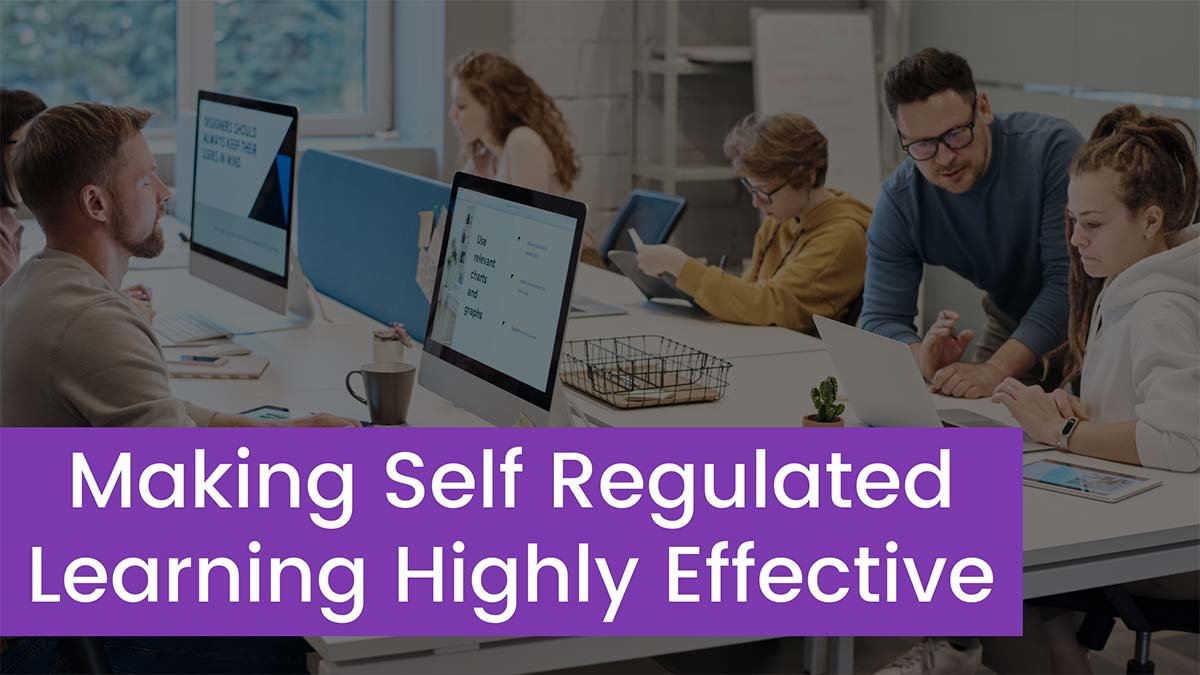Self-regulated learning aims at enabling you to learn to be independent. It focuses on setting goals on your own and working by yourself to achieve the goals you set. It creates a sense of autonomy in the accomplishment of tasks.
Self-regulated learning is the opposite of the form of learning involving a professor handing you everything from reading materials and assignments. Domyhomework123 aims to provide you with the necessary steps you could take to ensure your self-regulated learning journey is successful and highly effective.
After you set goals you hope to achieve in self-regulated learning, you need to figure out systematic and strategic ways of achieving your set goals and working to achieve them. Teaching strategies promoting self-regulated learning are like;
- Workshop Model
This involves beginning the class with a mini-lesson and allowing students to independently figure out the study topics more deeply. Meanwhile, the teacher goes around gathering their independent thoughts and outcomes.
- Portfolios
It involves the teacher setting learning goals and taking periodic sessions to check whether the learning process has made the students achieve the goals. Meetings with teachers help students determine their progress in accomplishing goals.
Self-Regulated Learning Elements
1. Processing Modes Regulation
This is the first step in your self-regulated learning journey. It provides you with a choice of how you intend to learn why you intend to learn. This creates a foundation for the learning process. Here, you can determine whether you aim to achieve good grades. Seek to achieve personal understanding or just the memorization of information.
2. Learning Process Regulation
This level involves you taking responsibility for your learning process, called metacognition. You will have to do the heavy lifting to determine what is working and what is not working, thus affecting your learning plans. This step enables recognizing areas you are weak and those that you are strong to determine your preferred learning style. This form of curiosity promotes an approach to the learning process with goals in mind and positivity to handle barriers.
3. Self-Regulation
This level involves setting goals and taking time to check on the progress of your learning journey aimed at reaching the intended goals set.
Ways of Making Self-Regulated Learning Process Highly Effective
Here are some ways and tips that you could use to ensure your self-regulated learning journey is effective.
1. Changing your mindset about learning
It is important to have the right reasons for self-regulated learning. You need to change the mindset of finishing your assignment because the teacher said so or the fact that you are searching for the highest grades. It is important to approach learning because you want to learn and be independent throughout the process.
You must develop curiosity about your study topics and have interests that go beyond the course objectives of the subject. Find the interesting bit of every assignment that resonates with you to experience self-regulated learning.
2. Figuring out your learning style
It is important to determine which learning styles are suitable for you. The choices can be kinesthetic, auditory, visuals, and many others. Figure out the effective style for you and use it.
3. Learning how learning works
This involves figuring out ways that you form memories and can memorize or retain information in your brain. You have to influence how your emotions can affect your learning. These effects can be understood by researching psychology and cognitive sciences.
4. Getting Introspective
This helps you determine the times you are most successful and least successful in your learning; from this, you can raise questions that will seek to solve the bottlenecks in the learning.
5. Finding someone to honestly tell your learning strengths and weaknesses
This will create self-awareness about your choice of learning style and abilities that influence your learning.
6. Setting SMART Goals
This gives you a reflection of your learning process. Your goals need to be Specific, Measurable, Attainable, Relevant, and Time-bound.
7. Reflecting on progress
The step will help you determine why or why not you are reaching your set learning goals. It will boost your self-awareness.
8. Finding trustworthy people that will keep you accountable
In as much as self-regulated learning is a journey that you are responsible for each step, it is good to have friends who can honestly discuss your learning progress. Such discussions create self-awareness and help you to stay motivated enough to achieve your goals.
9. Saying your goals out loud with pride
You are readily going to achieve your self-regulated journey if you made these goals public. It motivates you to work hard and smart to be accountable at the end of the whole process to all who heard your goals. Additionally, you are likely to get the support that will see you through the process.
It is important to approach self-regulated learning with the right attitude that will enable you to identify areas that you are curious about learning. It is a personal learning process that needs you to set SMART goals and grow to be self-aware of your abilities, skills, and weaknesses. Be accountable for your progress and let nothing distract you from your goals.



![Read more about the article [Fixed 2023] Why Is My Phone 3G Not Working?](https://wuschools.com/wp-content/uploads/2022/01/Why-Is-My-Phone-3G-Not-Working-300x169.jpg)
